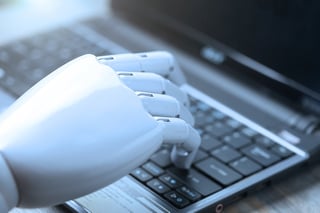How Artificial Intelligence Could Make WiFi Smarter
 Corporate networks are becoming more complex by the day. To keep up, enterprise IT teams should start to consider networking tools driven by cutting-edge technology like AI.
Corporate networks are becoming more complex by the day. To keep up, enterprise IT teams should start to consider networking tools driven by cutting-edge technology like AI.
We speak with hundreds of IT professionals a year in the course of our work, and if there’s one thing that the vast majority of them agree on, it’s that their jobs are getting more complicated and more challenging. Whereas just a few years ago a large enterprise network might encompass between 50,000 and 500,000 endpoints, in the wake of the IoT revolution, the average enterprise network now has millions of endpoints.
This sudden explosion of connected devices is rendering traditional methods of network management and optimization ineffective. In the past, an experienced network engineer would be able to pinpoint the source of a performance problem simply by sifting through router logs, TCP/IP packets, and other network data. That option is effectively off the table when it comes to today’s incredibly complex and decentralized network architectures, which simply produce too much data for networking professionals to handle on their own.
On the other hand, this huge challenge has sparked some innovative solutions. Enterprise IT teams have started looking for and adopting AI-powered shortcuts that reduce the complexity of effective network management.
Believe It or Not, The WiFi Isn’t Always to Blame
These AI solutions are replacing a far less effective approach to network complexity — namely, blaming one’s WiFi network for everything. This practice has grown so pervasive that it’s inspired its own IT performance metric: mean time to innocence (MTTI). Only after the MTTI has elapsed and the WiFi has been cleared of “wrongdoing” do enterprise IT teams start to investigate other potential pain points like DHCP servers, DNS servers, and WAN routers.
Needless to say, this is hardly an efficient approach to network troubleshooting, and it tends to have an adverse effect on a much more important metric: mean time to resolve/repair (MTTR). The MTTR for in-house enterprise helpdesks has hovered between seven and nine business hours for years, but as networks continue to get more complex, this response time is likely to climb — that is, unless networking professionals rethink their approach.
P(AI)nting a More Detailed Picture of Your Network
The good news is that recent advances in artificial intelligence (AI) technologies — especially machine learning algorithms — offer IT teams a powerful new network management tool. By deploying AI to sift through mountains of data too large to manage by themselves, networking professionals can not only pinpoint, but resolve performance issues in record time.
In light of the emergence of near-unlimited cloud-based computing resources, machine learning algorithms are now capable of executing packet captures with 20-, 60-, or even 100-gigabit wire speeds. Needless to say, it is impossible to match this performance manually. What’s more, AI empowers IT administrators to set and enforce rules related to failed connection attempts, roaming, capacity, access point uptime, and so on, regardless of the size or complexity of their network.
Of course, networking professionals have worked with these kinds of rules for years. But by integrating an AI tool into their processes, they can do so with greater precision and at greater volume. Clear violations of network performance rules are easy enough to spot, but in order to find less obvious violations, IT teams must probe performance across multiple access points, device types, operating systems, and applications. The complex interdependencies between these components of modern networks can be incredibly difficult to navigate, which is where a powerful AI “mind” comes in handy.
Genuine Networking Intelligence
But as effective as AI-based tools are, enterprises would be mistaken to assume that they’re capable of replacing human IT professionals altogether. “While AI-enabled machine learning will create a new approach to [network] design, the human element will not go away,” argues Network Computing contributor David Eden. “AI can show us new ways of designing faster, more cost-effective networks...but the actual build of the network must still be done by humans.”
In order to guarantee that their networks are high-performing, secure, and optimized for AI-assisted management, enterprises would be well-advised to solicit help from the (human) networking experts at Turn-key Technologies (TTI).
With over two decades of experience in enterprise networking and a collection of industry certifications that demonstrates our strong commitment to staying on the cutting-edge, TTI is the perfect partner for enterprises looking to optimize their networks for today and future-proof them for tomorrow.




